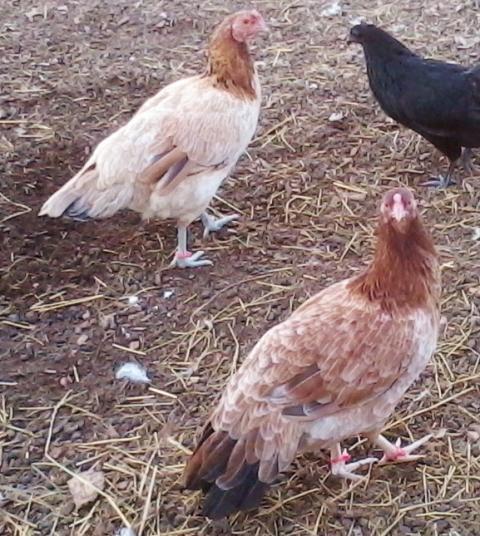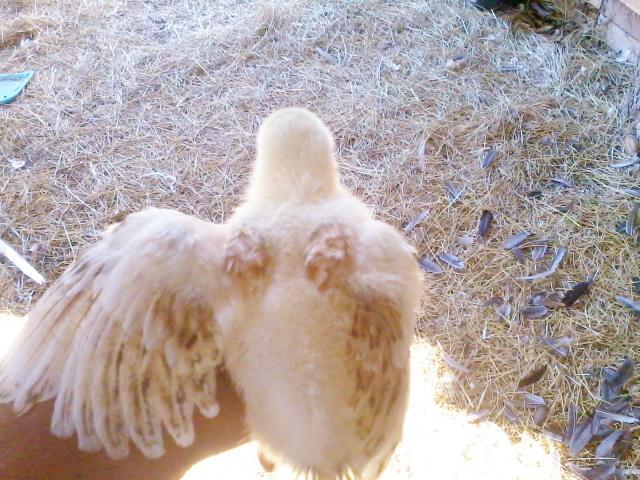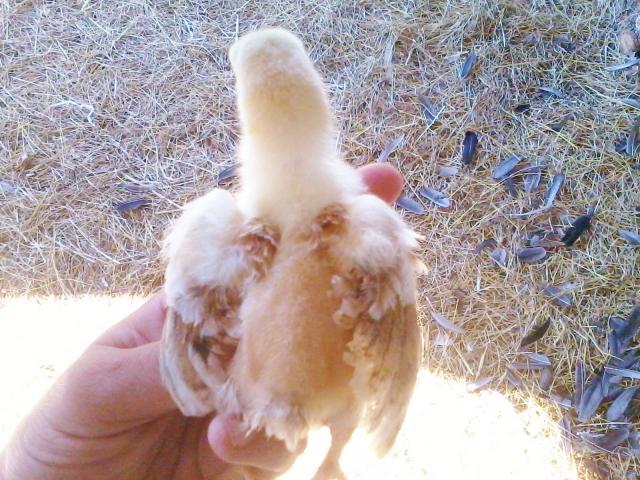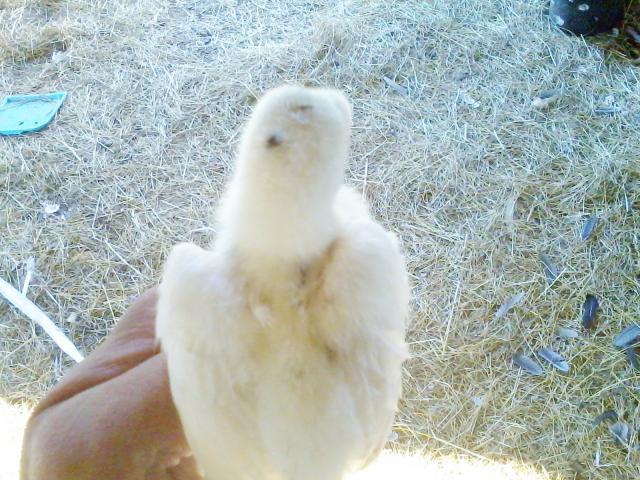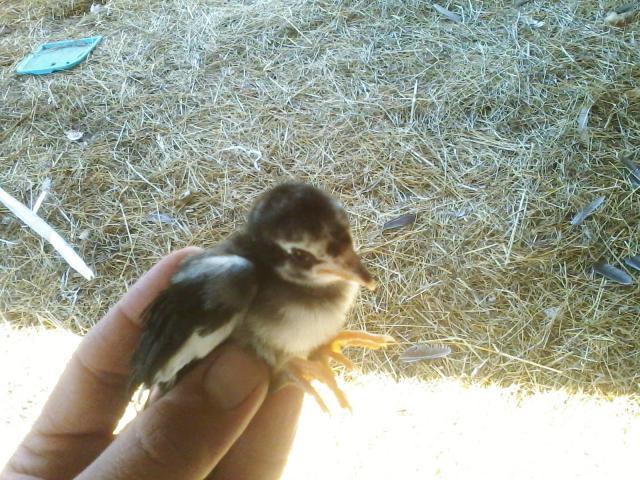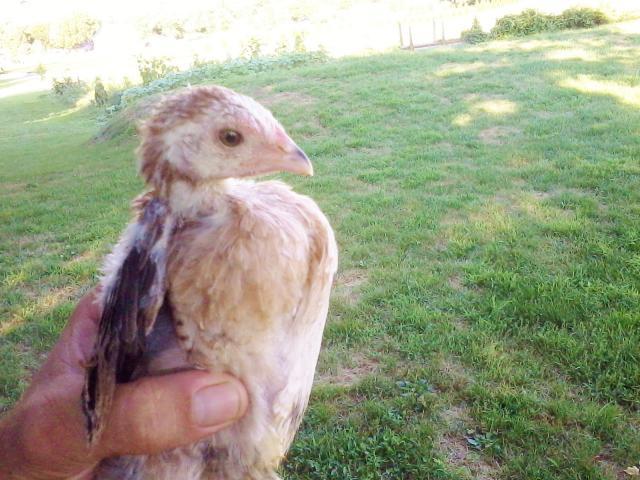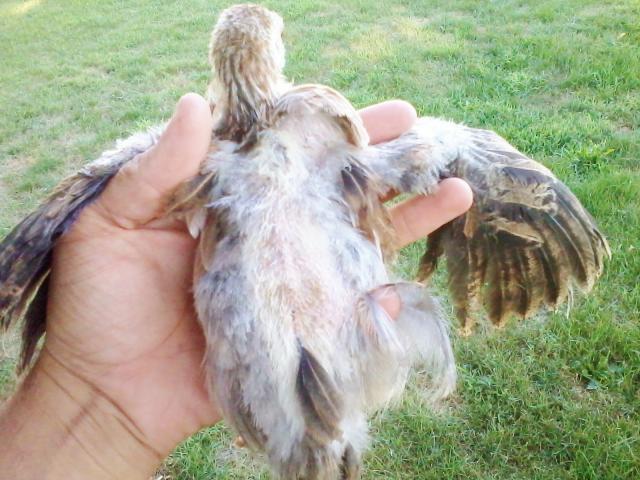There is such a thing as Dominant Wheaten, its dominant in wild looking birds(Black Breasted of all backgrounds that allows for Black Breasted Brow,e+,eb,ewh, ey,) with that in mind eWheaten(eWh) is Dominant to Wild Type(e+) and wild type looking(Black Breasted Red Looking)eb(brown) and its Dominant to Recessive Wheaten(ey) allele. this mutant was found in the most wild of wild examples... in the Red Jungle Fowl(found to be recessive to Wild type e+) I´ll have to dig some old info about it....
yes its possible, her are some reading from Dr. Ron Okimoto a very respected scientist, very loved at the Classroom in the coop forums..
Ron Okimoto. :
Even E isn't completely dominant on some genetic backgrounds. In some cases I've gotten eWH ER heterozygotes that look like eb birds.
Recessive wheaten is a strange story, but Smyth has told me that he used to maintain a recessive wheaten line, and Morejohn had a Red Junglefowl line that segregated wheaten downed chicks from wild-type parents in 3:1.
There probably is a recessive wheaten somewhere. I found a Buff Rock line that segregates for a weird E locus allele that seems to be a double mutant. I got it from McMurray. It has the Fayoumi birchin mutation and the dominant wheaten mutation in the same gene. I don't know what the phenotype of such a bird would be like. The Fayoumi mutation would send signal all the time (produce black pigment) and the wheaten mutation would inhibit signal propagation. At least, that is the theory if wheaten is like red fur color in mammals.
The idea is that dominant wheaten is dominant because of haplo insufficiency. This just means that in the presence of wheaten not enough signal is sent by the e+ or eb allele product and you get wheaten instead of stippled. Recessive wheaten would produce enough signal so that heterozygotes could still produce stippling, but homozygous recessive wheatens could not because two low signal producing gene products could not produce enough signal to produce stippling.
You can look at it like this, say that eWh eWh homozygotes produced 0 signal, eWh e+ heterozygotes produced 1/2 signal, but it isn't enough to produce wild-type phenotypes. Recessive wheaten might produce 1/4 signal or homozygous ey ey would produce 1/2 signal and heterozygous ey e+ would produce 3/4 (1/4 + 1/2)signal. The ey ey homozygotes would not produce enough signal and be wheaten, but the ey e+ heterozygotes do.
E and ER would be dominant to wheaten because the E and ER gene products produce enough signal in the heterozygotes to continue to produce the black phenotypes.
The E allele would be expected to send the most signal and has been found to not be regulated properly and seems to always send signal whether the receptor binds hormone or not. So it is always on and always sending signal to make black pigment. It has two mutations that in mammals are associated with black fur. One of the mutations is found in black wooled sheep, and the other is found in black furred mice. The E allele combines those two mutations. The probable birchin allele has only one of these (the one found in mice) two mutations and so may not send as much signal as the E allele product. The Fayoumi birchin allele has a totally different mutation that has not been found in mammals at this time, but produces a similar phenotype to the birchin (ER) allele.
The funky allele that I found in Buff Rocks has the dominant wheaten mutation and the Fayoumi birchin mutation combined. The two mutations should do different things to the gene. Beats me what it looks like without the columbian restrictors.
Quote:
this is where Dominant Wheaten gets all messy...
Wheaten is Only Dominant to all other e alleles if NO Melanizers(be it Dominant or recessive in nature) are present...so if you had Ml(dominant Melanitic) that would cancel Dominant eWh and you will have a eb(Brown) looking chick down...
below quote is taken from
http://www.the-coop.org/forums/ubbthreads.php?ubb=showflat&Number=30553&page=2 Dominance of Wheaten
Quote:
Hope I was of some help..


